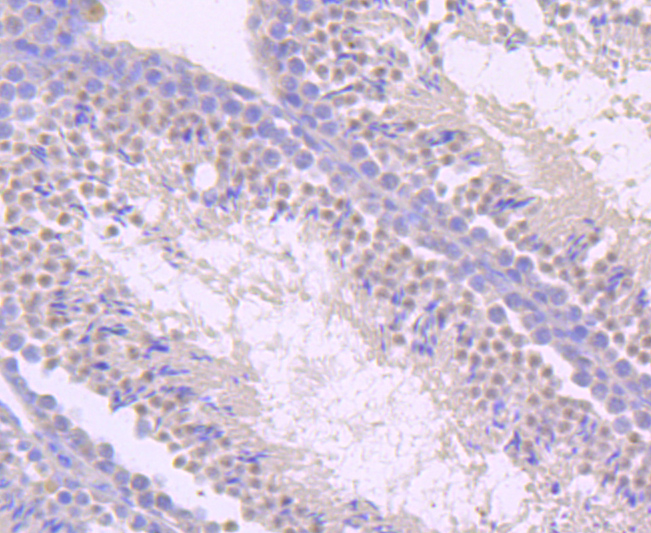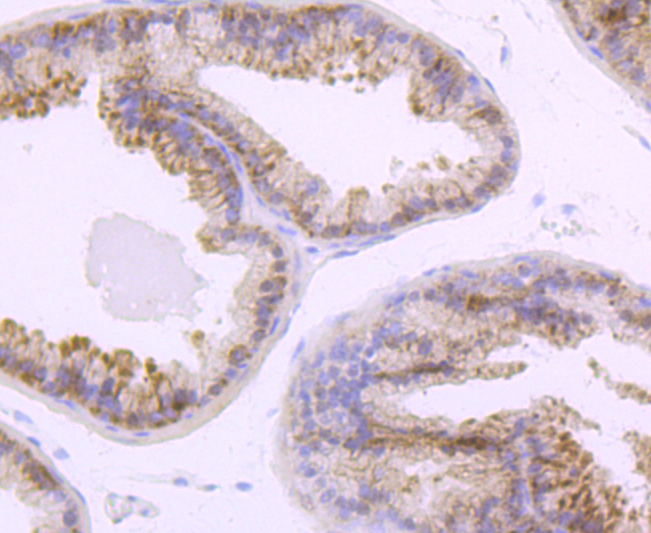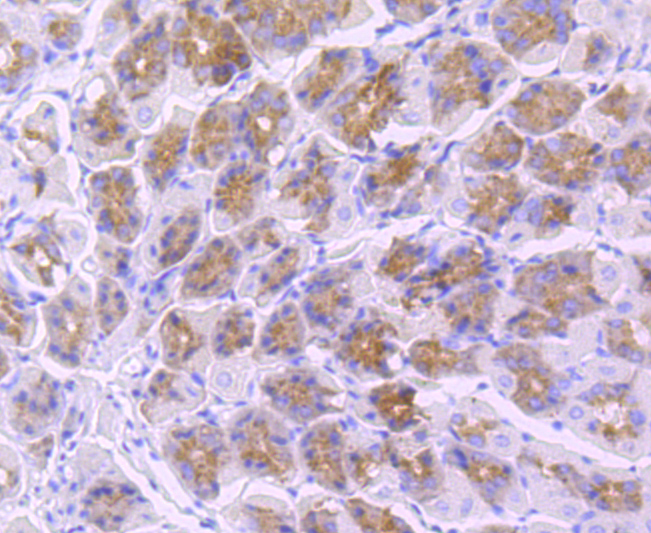Product Detail
Product NameTLR5 Rabbit mAb
Clone No.JM10-88
Host SpeciesRecombinant Rabbit
Clonality Monoclonal
PurificationProA affinity purified
ApplicationsWB, IHC
Species ReactivityHu, Ms, Rt
Immunogen Descrecombinant protein
ConjugateUnconjugated
Other NamesFLJ10052 antibody
MGC126430 antibody
MGC126431 antibody
SLEB1 antibody
TIL 3 antibody
TIL3 antibody
TLR 5 antibody
Tlr5 antibody
TLR5_HUMAN antibody
Toll like receptor 5 antibody
Toll like receptor 5 precursor antibody
Toll-like receptor 5 antibody
Toll/interleukin 1 receptor like protein 3 antibody
Toll/interleukin-1 receptor-like protein 3 antibody
Accession NoSwiss-Prot#:O60602
Uniprot
O60602
Gene ID
7100;
Calculated MW97 kDa
Formulation1*TBS (pH7.4), 1%BSA, 40%Glycerol. Preservative: 0.05% Sodium Azide.
StorageStore at -20˚C
Application Details
WB: 1:1,000-1:2,000
IHC: 1:50-1:200
Western blot analysis of TLR5 on Hela cells lysates using anti-TLR5 antibody at 1/500 dilution.
Immunohistochemical analysis of paraffin-embedded mouse testis tissue using anti-TLR5 antibody. Counter stained with hematoxylin.
Immunohistochemical analysis of paraffin-embedded mouse prostate tissue using anti-TLR5 antibody. Counter stained with hematoxylin.
Immunohistochemical analysis of paraffin-embedded mouse stomack tissue using anti-TLR5 antibody. Counter stained with hematoxylin.
Immunohistochemical analysis of paraffin-embedded human spleen tissue using anti-TLR5 antibody. Counter stained with hematoxylin.
Six human homologs of the Drosophila Toll receptor were initially identified based on their sequence similarities and designated toll-like receptors (TLR). Toll receptors are involved in mediating dorsoventral polarization in the developing Drosophila embryo and also participate in the host immunity. The TLR family of proteins are characterized by a highly conserved Toll homology (TH) domain, which is essential for Toll-induced signal transduction. TLR1, as well as the other TLR family members, are type I transmembrane receptors that characteristically contain an extracellular domain consisting of several leucine-rich regions along with a single cytoplasmic Toll/IL-1R-like domain. TLR2 and TLR4 are activated in response to lipopolysacchride (LPS) stimulation, which results in the activation and translocation of NFkB and suggests that these receptors are involved in mediating inflammatory responses. TLR5 specifically participates in the innate immune response to microbial agents. TLR5 is highly expressed in ovary and in peripheral blood leukocytes, most abundantly in monocytes and, to a lesser extent, in prostate and testis.
If you have published an article using product 49443, please notify us so that we can cite your literature.







 Yes
Yes



